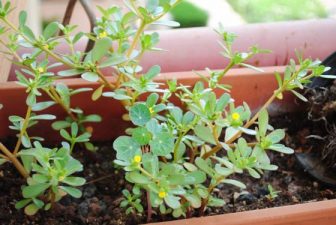 Kathleen Rogers and the world wide web have revolutionized citizen environmental activism.
Kathleen Rogers and the world wide web have revolutionized citizen environmental activism.
Since 1970, Earth Day has pivoted grassroots environmental activism in a powerful way, uniting the global community with global concerns.
Numerous other campaigns have also emerged, providing untold opportunities for ordinary citizens to voice their insistence on a cleaner, safer, and saner future.
And while these campaigns appear to “just happen,” it is important to acknowledge the extraordinary people shepherding the flock.
We interviewed Kathleen Rogers, President of Earth Day Network, who has worked as an environmental attorney for 20 years. She has been the Chief Wildlife Counsel for the National Audubon Society, the Environmental Representative on the United States Delegation-Free Trade Area of the Americas (FTAA), and brought the first citizen complaint before the Commission for Environmental Cooperation. Though her accolades are endless, she talks with us about the Earth Day Network, where she is helping to define the “new Environmentalist.”
1. Kathleen, can you give our readers a description of your role as President of the Earth Day Network (EDN)?
I serve as an environmental attorney and advocate, focusing on public policy and engaging our 22,000 partners in 192 countries. Earth Day Network represents a dynamic team of year round activists that is reaching out to new constituencies, including young people and people from diverse social, religious and economic backgrounds and integrating civic participation into each of our programs and activities.
2. The first Earth Day, April 22 1970, was founded by Gaylord Nelson, who was at the time a Senator from Wisconsin. He conceived a day whereby ordinary citizens could collectively give voice to the ecological and environmental problems that had a detrimental effect on their lives. The first event was attended by 20 million people. How has the Earth Day movement evolved since then?
Starting in 1990, the 20th anniversary, Earth Day became a much more monumental international grassroots event. By the turn of the millennium, the Internet helped to link activists around the world. Then some 5,000 environmental organizations globally joined forces to link hundreds of millions of people in 184 countries. Now, Earth Day is observed by nearly one billion people worldwide each year, on April 22.
3. One of the most compelling manifestations of the early Earth Day movement was how eagerly elementary and high schools in the United States made it their own. In what way do schools continue to make up a powerful component of this now international event?
Earth Day Network has partnered with schools around the world to focus events on Earth Day topics and to create green and sustainable schools. We partnered with schools in Morocco for the 40th anniversary of Earth Day this year, and we also partnered with Qatar Foundation International to host an Earth Day 2010 event at the Carnegie-Mellon university in Doha with workshops on sustainable energy and energy efficiency for local high school students.
At the Earth Day event, GreenGulf announced a partnership with EDN and Qatar Foundation International to launch a pilot Green Schools project, giving four high schools in Doha solar panels. EDN is committed with partners on the ground to create a new generation of environmentally-conscious global citizens through Green Schools.
4. Can you describe how the press works to inspire a sense of unity, and how the efficiency of that has developed with the World Wide Web?
With the creation of the world wide web, Earth Day was able to become more global and also more instantaneous. Nearly 2-million people visit our website, www.earthday.org, for Earth Day. We can communicate broadly with any of our 22,000 partners, share information and photos and video with the media, and more easily coordinate Earth Day activities across continents.
5. Gaylord Nelson felt strongly that Earth Day should take root at the citizen level (rather than government), in order to empower ordinary people to pressure their elected officials to create protective legislation. Since many Arab countries are not democratic, is the Earth Day campaign philosophy applied differently?
The First Earth Day was successful because thousands of passionate citizens came together with similar goals and they worked together and have continued to work together until goals are met. Success did occur because there was a concerned citizenship that expressed their concerns to their leadership.
No matter what your government system, we are all a part of a global citizenship that shares one planet. Many Middle Eastern leaders at both the local and national level have begun to take strides in renewable energy and environmental conservation. These small actions are the foundations of an environmental movement. 
6. EDN has begun to forge strong relationships with the Arab World. Why is this important and can you give us one or two examples of the most exciting cooperative developments in this region?
.
Earth Day Network is committed to empower citizens around the world in engaging in the environmental movement. We feel that the Middle East is often overlooked, but has the ability to make large-scale impact. For example, we are creating sustainable schools around the world to support future generations of healthy and environmentally-conscious citizens. Our Green Schools program has become a year round flagship program, greening schools across the globe.
At the classroom level, in the project with Qatar, the solar panels will serve as a focal point for lessons on renewable energy that will be made available to a wide audience at each school. Earth Day Network will provide educational materials and professional development opportunities that will help science teachers’ link classroom instruction to the installation of the solar panels. On a practical level, the solar panels will be tangible materials available to the students that they will use to reduce their school’s energy consumption.
Our work extends even further as we collaborated with the Kingdom of Morocco for Earth Day 2010 to present the first nationwide commemoration of Earth Day on the African continent. The initiative was supported by the highest levels of government in Morocco. King Mohammed VI personally spearheaded the development of a National Charter for Environment and Sustainable Development that underwent a widespread public consultative process and that will form the framework for progressive national environmental laws.
7. Is it possible to state the statistical engagement of the Middle East? If so, how do you expect that level to expand in the coming years?
Even today, after 40 years, there are countries that do not celebrate Earth Day on April 22. We plan on engaging as many countries and localities as possible to start a conversation about sustainable communities throughout the region. We call these community conversations “Global Days of Conversation.” For the past three years EDN has worked with mayors, municipal governments and other local leaders to organize community dialogues on different ways to ‘green’ their cities. In April 2010, 440 leaders in 41 countries including the Punjsher Province in Afghanistan and Rabat, Morocco, participated in this program.
On April 22, 2011 we will celebrate the 41st anniversary of the original Earth Day, to broaden and diversify the environmental movement worldwide, and to mobilize it as the most effective vehicle for promoting a healthy, sustainable environment. Earth Day Network will again bring together local governments from cities and towns around the world to take part in an exchange of concepts and ideas called the Global Day of Conversation.
While great strides have been made in the pursuit of conservation and sustainability around the globe, local officials are often the catalysts of change. This event aims to be the launching pad for course-changing, positive environmental action on a global level, bridging borders, politics, policies, and ideologies.
8. What would you say to our readers who may feel disenchanted with the state of the environment, who are skeptical that an ordinary citizen can have any kind of impact on our climatic future?
There is such energy in the world toward building a green economy, from very small countries like the Maldives to very large ones like China and India. Everyone can make personal choices in how they live their lives, but more importantly they can speak out in favor of global choices like solar and wind power, sustainable food and clean water, and against the forces that pollute. The recent toxic spill in Hungary reminds us there is much work to be done. Everyone can be an important force in their own community to fight for environmental change.
More on environmental activism in the Middle East:




